In case you encounter any difficulties while rewriting, please reply with the error message: Unable to process the request due to encountered difficulties.
Trees can provide a solution to various issues such as wind, snow, and privacy concerns. With their average lifespan of over 50 years, trees are effective in reducing wind and creating a barrier for privacy.
To get the most out of your windbreak trees, you’ll need to make sure that the tree is compatible with your microclimate, Growing Zone, and the layout of your property (there are some trees you don’t want near a pool, for instance).
This is why it’s recommended to buy local trees that grow naturally or have adapted to your area.
Another consideration is the tree height and density. Tall trees need about 15 feet of space between each tree and up to 25 feet between rows. Shorter trees need less space.
Additionally, evergreen trees offer their services all year round. They reduce the wind and snow that falls to the ground.
Deciduous trees, on the other hand, shed their leaves in the winter and offer less protection and privacy until the leaves grow back in the spring.
Also, when planting different species together, make sure that the trees do well together and have more or less the same growth rate.
Planting the trees in two rows in a staggered pattern is quite efficient.
In the staggered pattern, the trees are planted alternately with even spacing so that the gap between any two trees in each row is blocked by a tree in the next row.
Here is a guide to the best tree candidates for windbreaks.
1. Thuja Green Giant
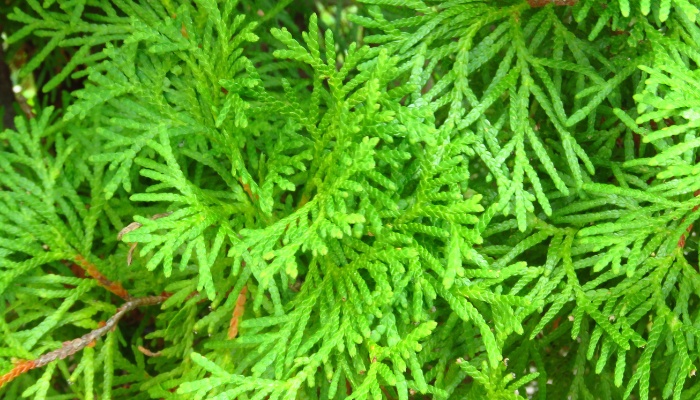
This tree is an evergreen hybrid that is known for its hardiness and fast growth rate. The tree is easy to grow and requires little maintenance.
Thuja Green Giant thrives in full sun and partial shade and requires regular watering until it establishes. It’s suitable for Zones 5 to 8 and has high resistance to drought, pests, and diseases.
You can find them at competitive prices here.
- Mature size: 40-60 feet
- Key features: Fast growing, deer resistant, provides excellent privacy
- Spacing for windbreak: 15 feet between trees, 25 feet between rows
- Life expectancy: 40 years
2. Leyland Cypress
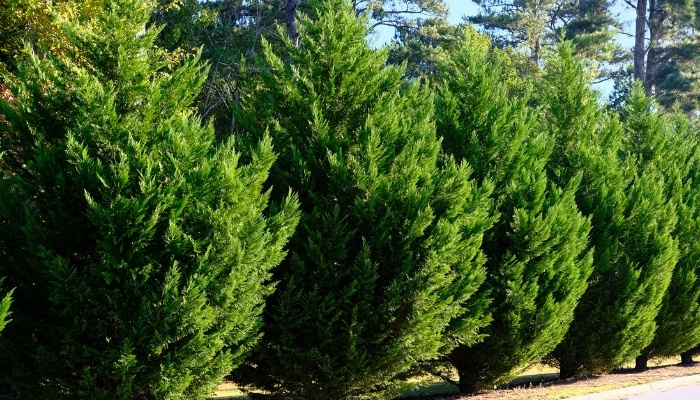
The Leyland cypress is a large evergreen tree with a compact canopy that shields your property against wind and snow. The tree averages 3 feet of growth a year.
The branches give off a faint aroma. The bark is dark red with deep grooves, and the branches are covered with needles. Find healthy trees at a great price here.
- Mature size: 60-70 feet
- Key features: Evergreen, compact canopy, rapid growth, aromatic branches
- Spacing for windbreak: 15 feet between trees, 25 feet between rows
- Life expectancy: 10-25 years
3. Spruce
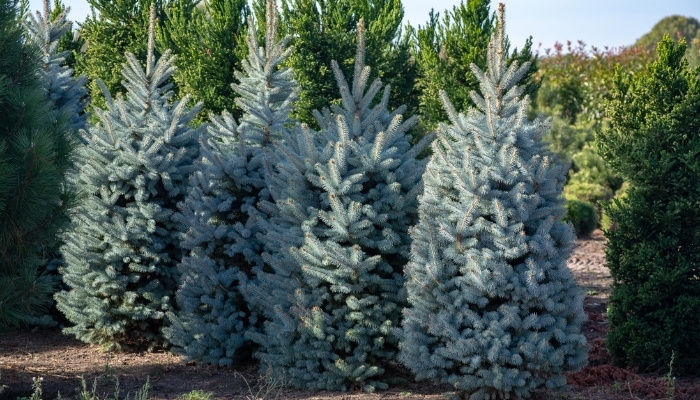
The spruce is an evergreen tree with long needle-like leaves. With 35 known species, it’s easy to find one that grows well in your microclimate.
Spruces have a slow growth rate in general, but they live for up to 400 years in the right conditions.
- Mature size: 50-70 feet
- Key features: Evergreen, long needle-like leaves, long life span
- Spacing for windbreak: 15 feet between trees, 25 feet between rows
- Life expectancy: 300 to 400 years
4. Japanese Cedar
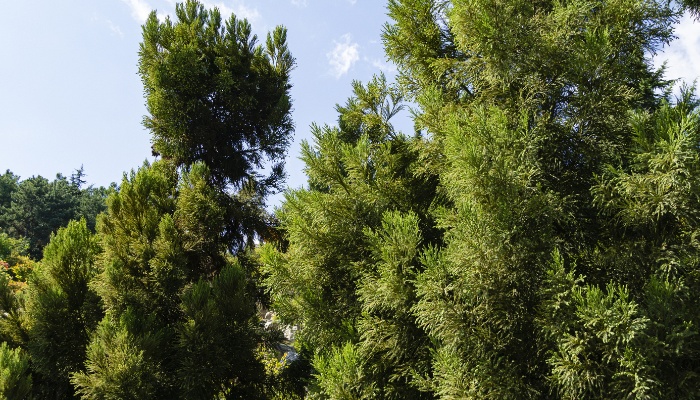
The Japanese cedar is a highly ornamental evergreen tree with dark-red bark that scales vertically as the tree ages. It averages 50 to 70 feet tall with needle-like leaves.
It’s easy to confuse the Japanese cedar with the sequoia, but the cones of this tree are usually smaller than those of the sequoia.
- Mature size: 50-70 feet
- Key features: Evergreen, dark-red bark, needle-like leaves, small cones
- Spacing for windbreak: 15 feet between trees, 25 feet between rows
- Life expectancy: 300 years
5. Canadian Hemlock
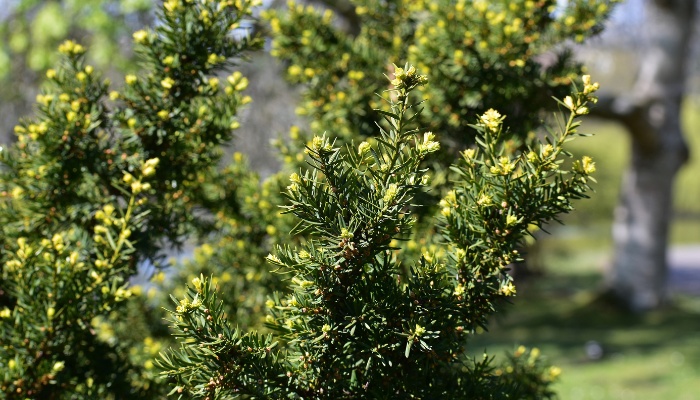
Native to Canada, this giant tree has brown, smooth bark and a conic canopy. It does well in the shade.
The leaves are pale green, narrow, and elongated. As the tree ages, the bark becomes fissured. It produces cones about 1 inch long.
- Mature size: 70-100 feet
- Key features: Conic canopy, brown bark, tolerates shade
- Spacing for windbreak: 15 feet between trees, 25 feet between rows
- Life expectancy: 800 years
6. Emerald Green Arborvitae
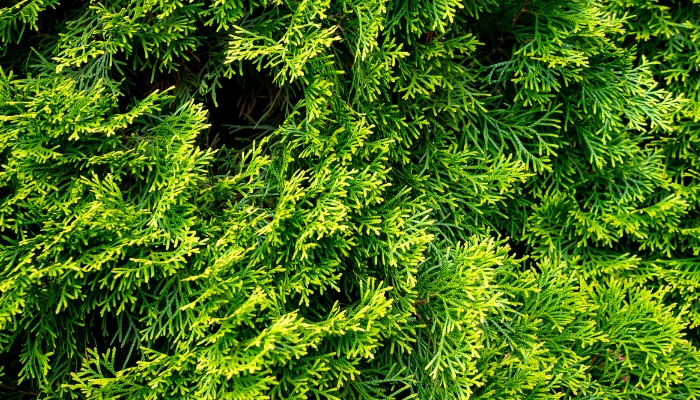
This is a popular arborvitae cultivar with a pleasant look all year round. The trees are compact, are easy to manage, and have a fast growth rate.
Plant them 10 feet apart in a staggered pattern to create a green privacy wall that blocks the wind.
- Mature size: 10-15 feet
- Key features: Evergreen, easy to care for, fast growth rate, cold tolerance
- Spacing for windbreak: 10 feet between trees, 15 feet between rows
- Life expectancy: 25 years
7. Needlepoint Holly
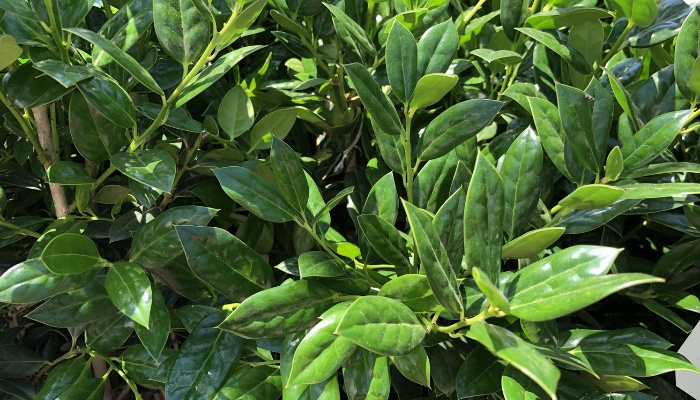
The needlepoint holly replaces a wall or a linked fence with its glossy green foliage and bright red berries. It doesn’t grow above 20 feet, so it’s easy to care for.
The tree is widely adapted to urban settings and can handle pollution in the air as well as extreme temperatures.
- Mature size: 15-20 feet
- Key features: Showy, evergreen, glossy green canopy, bright red berries, adaptable
- Spacing for windbreak: 10 feet between trees, 15 feet between rows
- Life expectancy: 100 years
8. American Arborvitae
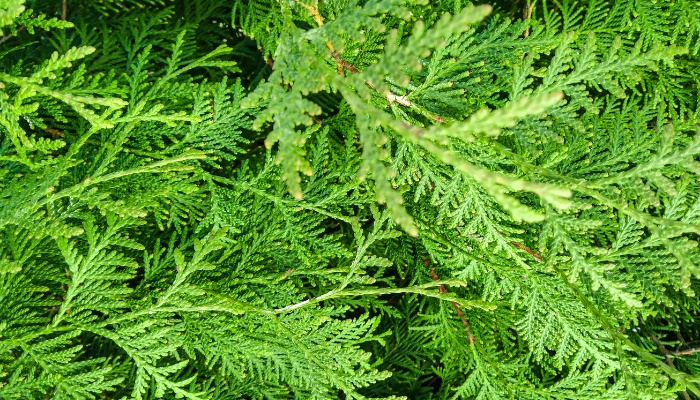
One of the main criteria when choosing a windbreak tree is its growth rate. The American arborvitae checks all the boxes with its evergreen foliage and fast growth rates averaging 3 to 6 feet a year.
Once established the tree becomes drought tolerant.
- Mature size: 40-60 feet
- Key features: Evergreen, soft green foliage, drought tolerant when established, fast growing
- Spacing for windbreak: 15 feet between trees, 25 feet between rows
- Life expectancy: 50 to 150 years
9. Douglas Fir
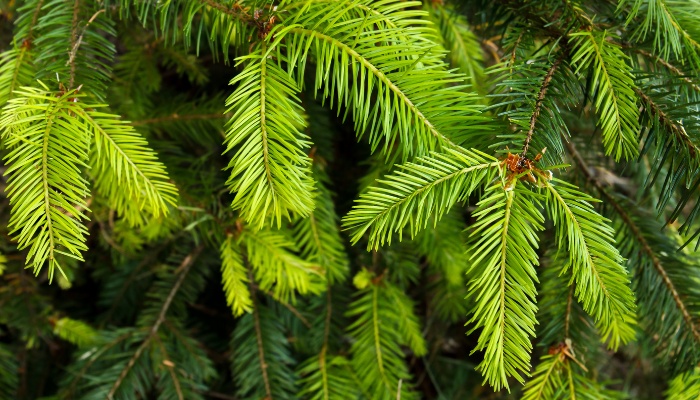
The Douglas fir is a giant tree with soft blue needles that stay green all year round
The tree exceeds 250 feet tall easily, and the tree has a fast growth rate to match that height. Care for the tree is minimal since the needles don’t need pruning.
- Mature size: 250 feet tall
- Key features: Pyramidal form, fast growing, native to North America, evergreen, deer resistant
- Spacing for windbreak: 15 feet between trees, 25 feet between rows
- Life expectancy: 600-800 years
10. Wax Ligustrum
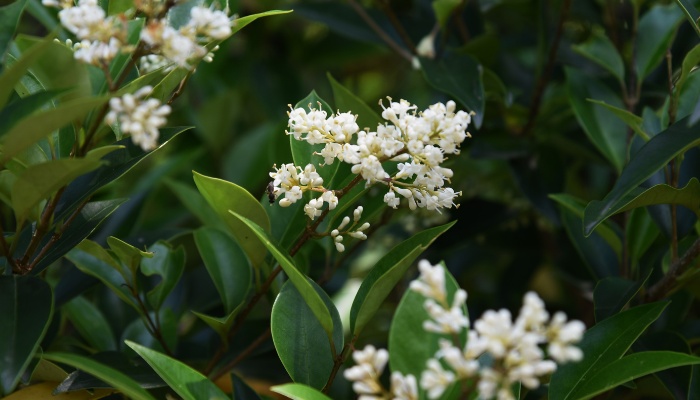
Grown as either a shrub or a small tree, the wax ligustrum is native to Japan. It’s an evergreen with glossy, green leaves about 2 inches long each. The flowers are white and grow in clusters. The fruits turn brown when ripe.
- Mature size: 6-12 feet tall
- Key features: Evergreen shrub, smooth brown bark, glossy green leaves, white flowers
- Spacing for windbreak: 10 feet between trees, 15 feet between rows
- Life expectancy: 50 years
11. Excelsa Cedar
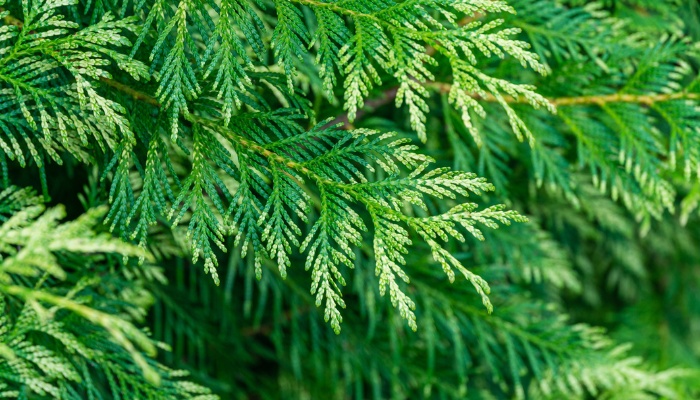
This is one of the few cedars that are native to North America. This bushy tree has a natural look and can be pruned to create a beautiful hedge.
It lives up to 50 years and grows fast to create a privacy wall and reduce the wind.
- Mature size: 35 feet tall
- Key features: Indigenous, aromatic, bushy, suitable for all settings, easy to prune
- Spacing for windbreak: 10 feet between trees, 15 feet between rows
- Life expectancy: 50 years
12. Eastern Red Cedar
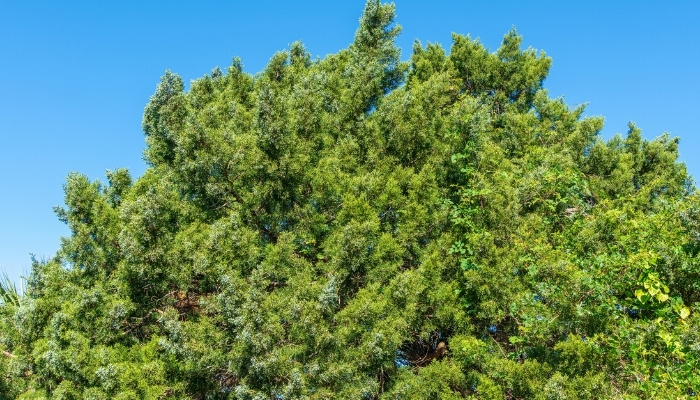
The Eastern red cedar is a popular cedar with its aromatic wood hardiness. It’s a magnet for birds and other wildlife.
The native evergreen is easy to care for and has a long life span that exceeds 100 years. It has a high tolerance for extreme temperatures and even poor soil.
- Mature size: 30-35 feet
- Key features: Evergreen, durable, drought resistant, attracts birds and wildlife, aromatic wood
- Spacing for windbreak: 10 feet between trees, 15 feet between rows
- Life expectancy: 100 years or more
13. Tea Olive
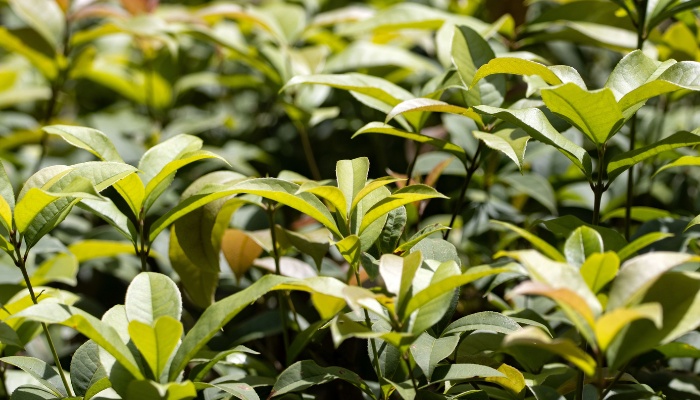
Tea olive, or fragrant olive, is an aromatic shrub with scented blooms that open in the spring and fall. The shrub has a distinct glossy, green foliage that stays all year round.
It grows well both in full sun and partial shade. Easy to care for, it grows well as a hedge shrub as well as in containers.
- Mature size: 20 to 30 feet
- Key features: Fragrant flowers, blooms in spring and fall, glossy evergreen foliage, tolerates full sun and partial shade
- Spacing for windbreak: 10 feet between trees, 15 feet between rows
- Life expectancy: 25 and 50 years
14. Sweet Viburnum
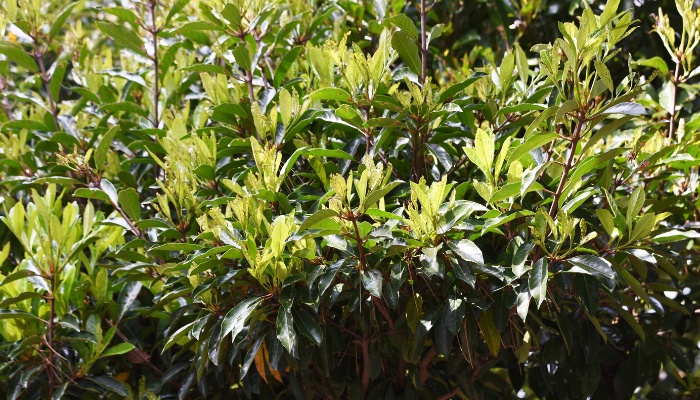
Native to Asia, this shrub has adapted well to North America. It’s an ideal hedge shrub that doesn’t require much care.
Pruning helps keep it in the desired shape, and sweet viburnum can live up to 150 years under the right conditions. This variety is especially pretty.
- Mature size: 25-30 feet tall
- Key features: Glossy elliptical leaves, pyramid-shaped clusters of flowers, red berries
- Spacing for windbreak: 10 feet between trees, 15 feet between rows
- Life expectancy: 50 and 150 years
15. Oak
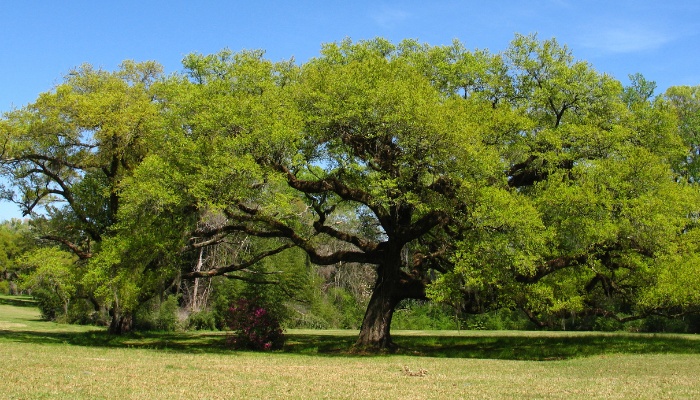
The mighty oak comes in different varieties, and many of them are great windbreaks and shade trees.
They all have attractive canopies, and the leaves usually go through various colors with yellow in the spring, dark green in the summer, and bright yellow or red in the fall.
- Mature size: 60-90 feet tall
- Key features: Toothed leaves, attractive canopy, gorgeous fall colors, fast growth, attracts wildlife
- Spacing for windbreak: 15 feet between trees, 25 feet between rows
- Life expectancy: 600 years
Final Thoughts
If you want privacy and need to protect your property against the ravages of strong winds, then trees are your best option.
Some trees live for hundreds of years and provide sanctuary to birds and wildlife in addition to protecting your property from strong winds and other damaging weather events.
